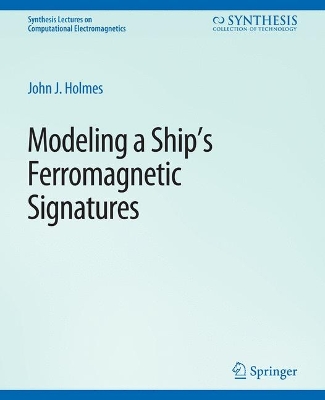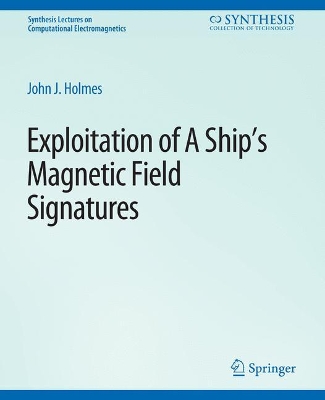Synthesis Lectures on Computational Electromagnetics
3 total works
Decreasing the magnetic field signature of a naval vessel will reduce its susceptibility to detonating naval influence mines and the probability of a submarine being detected by underwater barriers and maritime patrol aircraft. Both passive and active techniques for reducing the magnetic signatures produced by a vessel's ferromagnetism, roll-induced eddy currents, corrosion-related sources, and stray fields are presented. Mathematical models of simple hull shapes are used to predict the levels of signature reduction that might be achieved through the use of alternate construction materials. Also, the process of demagnetizing a steel-hulled ship is presented, along with the operation of shaft-grounding systems, paints, and alternate configurations for power distribution cables. In addition, active signature reduction technologies are described, such as degaussing and deamping, which attempt to cancel the fields surrounding a surface ship or submarine rather than eliminate its source.
Ferromagnetic models of ships and submarines that predict or reproduce their magnetic signatures have found applications in the development of both offensive and defensive military systems from World War II to the present. The mathematical basis of generalized coordinate systems will be presented and demonstrated with example applications to analytic spherical and prolate spheroidal magnetic ship models. In addition, the advantages and pitfalls of using complex finite-element- and boundary-element numerical techniques to predict high-order near-field ship signatures will be discussed, followed by a short description of the design and testing of complementary physical scale models. Extrapolation of measured magnetic signatures from testing environments to threat areas using semi-empirical math models will be presented, along with an explanation of their inherent instabilities and methods for regularizing them. These magnetic ship signature modeling techniques are used today in designing optimized signature reduction systems that have a minimum impact on ships and their systems. The discussion will be closed with an important discussion of the verification and validation of magnetic models of surface ships and submarines.
Surface ship and submarine magnetic field signatures have been exploited for over 80 years by naval influence mines, and both underwater and airborne surveillance systems. The generating mechanism of the four major shipboard sources of magnetic fields is explained, along with a detailed description of the induced and permanent ferromagnetic signature characteristics. A brief historical summary of magnetic naval mine development during World War II is followed by a discussion of important improvements found in modern weapons, including an explanation of the damage mechanism for non-contact explosions. A strategy for selecting an optimum mine actuation threshold is given. A multi-layered defensive strategy against naval mines is outlined, with graphical explanations of the relationships between ship signature reduction and minefield clearing effectiveness. In addition to a brief historical discussion of underwater and airborne submarine surveillance systems and magnetic field sensing principles, mathematical formulations are presented for computing the expected target signal strengths and noise levels for several barrier types. Besides the sensor self-noise, equations for estimating geomagnetic, ocean surface wave, platform, and vector sensor motion noises will be given along with simple algorithms for their reduction.


